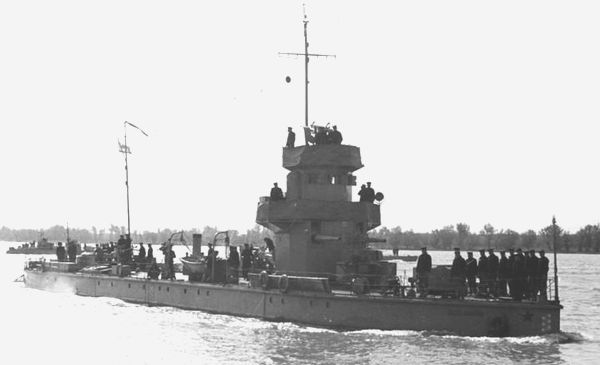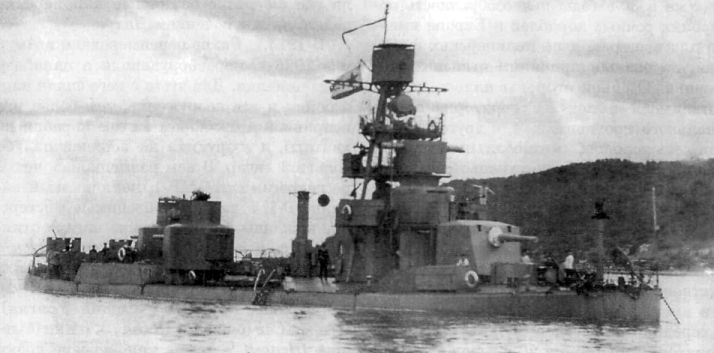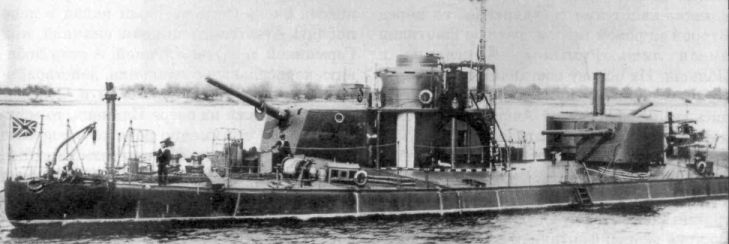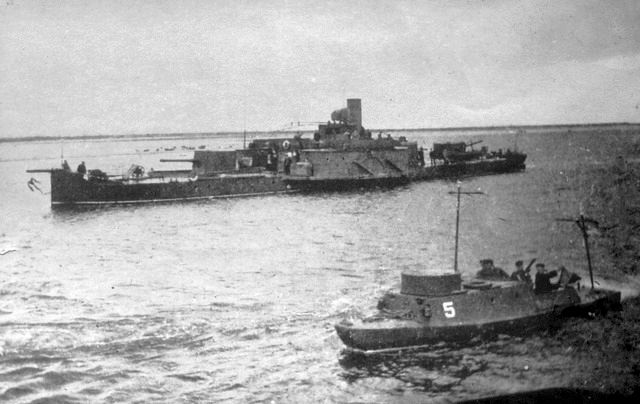Soviet WWII monitors

Soviet monitor of SB-37 project.
| Specifications of Russian WW2 monitors | ||||||||
| Type (project) | Shkval | 1190 | SB-12 | SB-30 | SB-37 | |||
|---|---|---|---|---|---|---|---|---|
| Built | 8 | 3 | 1 | 1 | 6 | |||
| Displacement, t | 1000 | 1802 | 365 | 300 | 239 | |||
| m | Length | 70,98 | 88,03 | 53,4 | 50,7 | 51,2 | ||
| Beam | 3.95 | 11,09 | 11 | 8,2 | 8,22 | |||
| Draught | 1,59 | 2,94 | 0,82 | 1,06 | 0,885 | |||
| Speed, knots | full | 11,9 | 15,4 | 11,5 | 10 | 8,3 | ||
| economic | 8 | 10 | 8,2 | |||||
| Engines (Propulsion) | Four diesel motors of 1000 to 1870 hp total | Two diesel motors 38-KR-8 of 800 hp each | Two diesel motors 4-DR-24/38 of 480 hp each | Two diesel motors 4-SD-19-32 of 140 hp each | ||||
| Crew | 152-156 | 251 | 86 | 68 | 72 | |||
| Armament | Main | Four turrets with 1x152-mm or 2x120-mm guns | Six 130-mm B-28 guns | Two 130-mm B-7 guns | Turret MK-2-4 with 2x102-mm B-2 guns | Turret MK-2-4 with 2x102-mm B-18 guns | ||
| Universal | Three turrets with 2x45-mm 41K guns | Two turrets with 2x45-mm 41K guns + two 75,6-mm cannons | Two turrets with 2x45-mm 41K guns | Two turrets with 1x45-mm 40K guns | ||||
| AA | Six 12.7-mm DshK or four 20-mm cannons | Two 37-mm 39K cannons + five 12,7-mm dual DshKM-2B | Four 4x7,62-mm M-4 (quad Maxim) MGs | Two 4x7,62-mm M-4 (quad Maxim) MGs | Two 37-mm cannons 70K and three 12,7-mm DshK MGs | |||
| Armor, mm | Side | 76 | 75 | 7,2 | 16 | 8 | ||
| Roof | 16 | 4,6 | 16 | 16 | ||||
| Deckhouse | 51 | 7,2 | 30 | 30 | ||||

Soviet monitor Sverdlov
 monitor “Krasnyi Vostok” destroyed the enemy gunboat Li Chieh (former German ship “Otter”)
monitor “Krasnyi Vostok” destroyed the enemy gunboat Li Chieh (former German ship “Otter”) 

